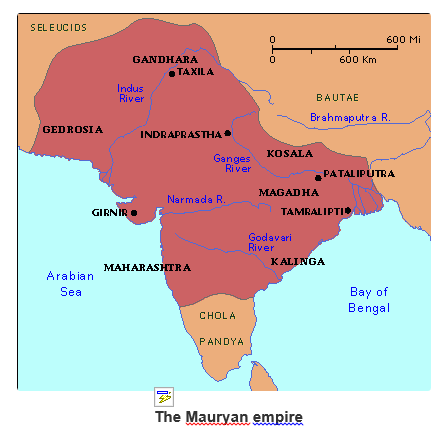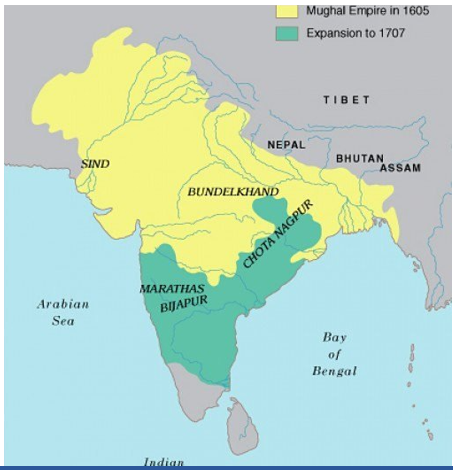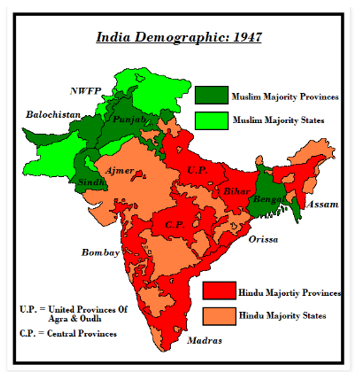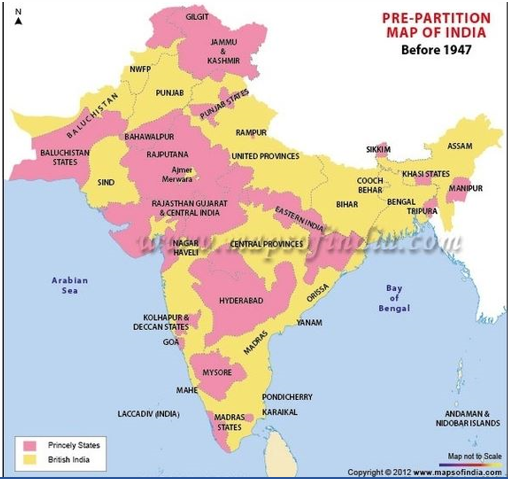History of 69 years: “India” was created into a single country by the British in 1947
Posted on August 18th, 2016
Shenali D Waduge
India” was ruled by many kings as well as foreign rulers. Some had large empires while some ruled just one city. Even at the height of expansion no dynasty held the entire area that is today called India. ‘India’ was never one single country until the British put all the princely kingdoms and provinces together to create India in 1947. The name ‘India’ cannot be traced in any of the Vedas, Puranas, Itihaasa or even Amarakosa. Whatever the Indian envoy to Sri Lanka says there was never a country called India until the colonial British christened it. Undeniably there are ancient customs, traditions and a rich past that neo-colonial agendas are politically trying to destroy using the very representatives elected to office and this is what Dharmic religions and natives that value them need to take cognisance of.
At the time of independence, the names Bharat, Hindustan, Hind and Bharatbhumi, Bharatvarsha were suggested to be used for the soon to be independent nation – while individually these names connote different meanings, conclusively none stood for the area historically portraying the length, breadth, history, cultures, and unity because at no time were these areas under any one Indian or foreign ruler.
The Indian Constitution today, uses both India & Bharath. Neither name guarantees the size of the nation. However, In The Soul of India published in 1911, Bipin Chandra Pal (1858-1932) proclaimed Bharat to be the only real indigenous name for India.
It was during Moghul rule India was called Hindustan. In 1904 Mohammad Iqbal penned his famous patriotic poem in Urdu Hamārā deśa, ‘Our country’ – Iqbal called the inhabitants of Hindustān by the old appellation Hindī, which signifies ‘Indian’. However, Savarkar by using Hindustan for Hindus omitted Sikhs and Muslims.
During the Constitutional debates to draft the Indian Constitution Seth Govind Das, a Congressman of Kamalapati Tripathi proposed Bharat as it was ‘befitting our history and our culture’, because it was found in the old Hindu literature, whereas the ‘word India does not occur in our ancient books’.
Hargovind Pant pointed out this name (India) was given to our country by foreigners who having heard of the riches of this land were tempted towards it and had robbed us of our freedom in order to acquire the wealth of our country. If we, even then, cling to the word ‘India’, it would only show that we are not ashamed of having this insulting word which has been imposed on us by alien rulers. Really, I do not understand why we are accepting this word”
At the other spectrum Pandit Balkrishna Sharma (‘United Provinces, General’) went on to say I hate the word ‘Hindustan’.
What is amply clear is that we have a problem where a group of natives wish to adhere to western model of how Asians should live and function while at the other spectrum the Asians wish to keep their heritage and not have the Abrahamic religions dictate how we should live and think.
In 2004 the Samajwadi Party proposed the usage of the term Bharat only. It was in July 2005 that V. Sundaram, a retired member of the IAS and a freelance journalist declared that ‘Bharat’ be removed from being the name of the nation because it sounded too Hindu. In 2012 Congress MP Shantaram Naik introduced a Bill to the Rajya Sabha to amend Article 1 to replace Bharat with India in the Preamble to the Constitution and rephrase ‘India, that is Bharat’ to Bharat only and substitute Bharat to wherever India is mentioned in the Constitution. In 2015 a public interest litigation was filed in the Supreme Court demanding that India should be renamed as Bharat http://www.dnaindia.com/india/report-india-or-bharat-supreme-court-seeks-response-from-centre-state-governments-2080494
Let us look at the history.
Remains found in the Narmada Valley in central India estimates that people had been living there between 500,000 and 200,000 years ago. The Bronze Age began around 3300 BCE with the early Indus Valley Civilisation – this area covers modern-day India (Gujarat, Haryana, Punjab and Rajasthan provinces) and Pakistan (Sindh, Punjab, and Balochistan provinces).
The Harappans were the inhabitants of the ancient Indus river valley. Around 1700 BCE most cities were abandoned and civilization declined. The Vedic period started around 1750 BCE to 500BCE. The Aryan society were distinct from the Harappans. Many of the previous small tribal units and chiefdoms began to coalesce into monarchical, state-level polities.
The Kuru kingdom was the first state-level society of the Vedic period. Then came the Panchala & Videha kingdoms (covering Nepal and Bihar). From the sixth centuries BCE to fourth centuries BCE sixteen kingdoms or oligarchic republics (known also as mahajanapada) existed. These 16 kingdoms are mentioned in ancient Buddhist texts like the Anguttara Nikaya that existed prior to the rise of Buddhism. Magadha is one of the 16 kingdoms where Gautama Buddha founder of Buddhism lived, he attained enlightenment in Bodh Gaya, gave his first sermon in Sarnatha and held his first Buddhist Council in Rajagaha.
The Maurya Empire (322–185 BCE) was the first empire to unify India into one state however the Maurya Empire covered only Himalayas in the North, Assam in the East, modern Pakistan to the West upto Hindu Kush mountains in what is today Afghanistan. Modern Odisha (ancient Kalinga) was not covered by Maurya Empire. King Ashoka and Chanakya’s Arthashatra emerged from Mauryan times.
The Kushan kingdom (now Afghanistan) was established in 1stc AD. Kushan kingdom was ended by Persian invaders in 3rd c AD with the rule of the Guptas which came to an end in 5thc AD with arrival of the Huns seizing Kashmir and Punjab

The first of the major invasions came from Alexander of Macedonia (336 B.C.E. – 323 B.C.E.) to spread Greek culture.
The Islamic invasions (636 C.E. – 850 C.E.) under Caliph Umar, within four years of Muhammad’s death were brutal. French writer François Gautier has said, “The massacres perpetuated by Muslims in India are unparalleled in history, bigger than the Holocaust of the Jews by the Nazis; or the massacre of the Armenians by the Turks; more extensive even than the slaughter of the South American native populations by the invading Spanish and Portuguese.” – Islamic rule lasted 1000 years.
Famous Islamic dynasties – Tughlaqs (1320 C.E. – 1412 C. E), the Mughals (1526 C.E. – 1857 C.E) Akbar (1556 AD – 1605 AD) Shah Jahan (1628 AD – 1658 AD) Aurangzeb was the last of the Mughals (1658 AD – 1707 AD) The last Mughal emperor Bahadur Shah Zafar was imprisoned by the Britishers after the 1857 mutiny.
What is interesting to note is that the Mughals did not invade Nepal, Bhutan, Assam and thus Buddhism survived however under politicized Hindu rule Buddhism has statistically declined. This must be a concern for Sri Lanka’s Buddhists with India’s present overtures to build a mythical Ramayana trail and news of other Indian influenced politically motivated Hindu incursions in Sri Lanka which will all be future threats to the survival of Buddhism in Sri Lanka if not addressed now itself. While the Buddhists empathize with the manner Hindu India is being aggressively subject to evangelization by Western NGOs, we cannot condone the political aspect of Hindu rule that seeks to undermine Sri Lanka’s sovereignty and integrity and directly affecting the Buddhist ethos of the country.

Then came the Portuguese, Dutch and the British.
The Portuguese Vasco da Gama arrived in 1498. In 1510 Affonso de Albuquerque captured the island of Goa. Rivalry between the Dutch and English resulted in the Dutch East India Company “winning” Southeast Asia and Indonesia and the British East India Company having to settle for “second-best”, that is India.
The British East India Company was established under a Royal Charter of Queen Elizabeth I on 31st December 1600 AD. The Company rule commenced in 1757, after the Battle of Plassey. The company began annexing states or forming treaties with limited power to the Indian rulers. In the early 19th century, the territories of these princes accounted for two-thirds of India.
The Company took control of Mysore by defeating Tipu Sultan in 1792 and the Marathas were finally defeated in 1819 AD. By 1850s the company succeeded in establishing power in Bengal, Bihar, Orissa and the east coast. By 1816 it took over Nepal, Sind in 1843, Punjab in 1849 and Burma in 1886.
After the 1857 mutiny the British Crown took direct control over administration from the company. British divided India into 2 parts – British India, directly governed by the British government through provinces (earlier Presidencies of British India) and the Princely states in British India with local ruler or king with honorary titles like Maharaja, Raja, Maharana, Rana, Nizam – but Britain at any time could interfere into the internal affairs of these states.
The Four Grand Divisions of India
- Bengal Presidencywith its capital at Calcutta established 1690.
- Bombay Presidencywith its capital at Bombay in 1687.
- Madras Presidencywith its capital at Madras established 1640 (the presidency included most of southern India, including the whole of the Indian states of Tamil Nadu and Andhra Pradesh and parts of Odisha, Kerala, Karnataka, Telangana, and the union territory of Lakshadweep.) In 1950, when the Madras Presidency became Madras State
- North-Western Provinceswith the seat of the Lieutenant-Governor at Agra 1834.
The queen’s proclamations of 1858, promised not to extend British territories in India by annexing Princely states. Queen Victoria became Empress of India in 1876. India was officially known after 1876 as the British Indian Empire.
British India in 1910, covered approximately 54% of the area and included over 77% of the population. The term British India also applied to Burma for a shorter time period: starting in 1824, a small part of Burma, and by 1886, almost two thirds of Burma had come under British India. From 1937, Burma was administered as a separate British colony. British India did not apply to Ceylon which was a British Crown Colony. Maldives was a Protectorate.
When the British gave ‘India’ independence in 1947 there were 565 Princely States & 17 Provinces. Upon the Partition of British India into the Dominion of India and Dominion of Pakistan, 11 provinces (Ajmer-Merwara-Kekri, Andaman and Nicobar Islands, Bihar, Bombay, Central Provinces and Berar, Coorg, Delhi, Madras, Panth-Piploda, Orissa, and the United Provinces) joined India, 3 (Baluchistan, North-West Frontier and Sindh) joined Pakistan, and 3 (Punjab, Bengal and Assam) were partitioned between India and Pakistan.


Yellow = directly ruled by a colonial administration
Pink = ruled by independent kings with limited sovereignty which was controlled by Britain. These local kings were happy to send their forces to quell rebellions.
Contrary to opinion that Tamil Nadu was never invaded, General Malik Kafur entered Tamil Nadu in 1311. Malik Kafur looted Madurai also and returned north after a few months. He is said to have taken over 90,000 mounds of gold, unspecified numbers of jewelry and famed Pandyan pearls, 23,000 horses and 612 elephants. Thereafter, much of Tamil Nadu became part of Sultan Mohammad-bin-Tughlug’s empire of the Delhi Sultanate for a brief period (approximately 1327 to 1335).
Refer Nilakanta Shastri’s book “History of South India” & R.C.Majumdar. Romilla Thapar – Early India: From the Origins to AD 1300.
Jawaharlal Nehru said India’s history is a ‘bundle of contradictions held together by strong but invisible threads’, true the landmass has a history covering Indus Valley civilization, vedic period, 16 ‘republics’, foreign conquests by Persians and Greeks, the Mauryan Dynasty thriving under Ashoka the Great, Deccan and South India ruled by Cholas, Cheras, Pandyas, the Gupta Dynasty, migrations from Central Asia & Iran, migration of Zoraastrians (Parsis) Arabs, Mughals, occupation by French, Dutch, Portuguese and British make up many non-indigenous claims to the nation that is Bharat. Yet, what is clear is that the area today known as India christened by colonial British was never the area that came under any Indian dynasty or foreign rulers. Neither did these dynasties call their empires ‘India’ at any given time.
Shenali D Waduge
August 17th, 2016 at 7:24 pm
The only British made thing standing to day is the Indian Empire.
The so called last British Empire is in reality was British-Indian Empire.
Tropical dominions (eg. Ceylon, Fiji, Mauritius, Guyana, Malaya, Burma and others) colonized by people from the Indian Sub Continent,
Colder dominions (eg, Canada, Australia, New Zealand, Falklands) colonized by the British.
We as subjects of the Indian Empire should realize our predicament and fight for freedom from the Indian Empire.
August 17th, 2016 at 7:46 pm
Endia has always been the enemy of SL.
* Before Brits Endians invaded SL to kill our kings and plunder
* During Brits Endians invaded SL to rob land and help Brits weaken locals
* After Brits Endians invaded SL to create Tamil Elam
* During COLD WAR-1, Endia teamed up with SOVIET UNION to attack SL
* Now in COLD WAR-2, Endia teams up with UNITED STATES to attack SL
Nothing has changed since RAVANAN time. Create big BS lies and invade SL. That is the Endian strategy.
SL should invite China to build artificial islands in the Endian Ocean to protect ships from Endian attacks.
August 18th, 2016 at 1:17 am
Thank you Shenali for this timely article.
India is really a British creation; It is in this b
August 18th, 2016 at 1:20 am
Thank you Shenali for this timely article.
India is really a British creation; It is in this background we see Buddhist India -that is that Buddha was not an Indian . He belonged to a different Kindom at a different time therefore our culture hasn’t even the most remote connection to India as we know it today.
August 18th, 2016 at 1:49 am
Shenali I put your article into my face book with the following comment:
“Prince Siddhartha and therefore the Compassionate Buddha Comes from a Kingdom in our neighboring country which the British called India. Therefore it is wrong to say that Buddhism came to us from India, as India never existed during the time of the Buddha.”
August 18th, 2016 at 2:47 am
India has over 400 million poor people and over 40 million people in India are unemployed. If this ETCA is signed and the Hanuman bridge is built all these desperate people in India will come in droves to Sri Lanka since the socio-economic situation of Sri Lanka is a million times better than the socio economic situation of India. I would urge the uncaring and cruel Indian government to provide basic housing, clean water, sanitation, healthcare, education, food and clothing to these desperately poor 400 million Indians rather than spending US 5.2 billion dollars in building a Hanuman bridge to Sri Lanka. If Sri Lanka signs this ETCA with India it will be Sri Lanka’s end. Sri Lanka should not sign any such trade deals where people can come here to work freely, unless the country we are signing the ETCA with has a similar or a better socio-economic situation than Sri Lanka. I would urge the uncaring, corrupt and cruel India Government to immediately stop building space stations and nuclear weapons and use that money to provide basic housing, clean water, sanitation, healthcare, education, food and clothing to the 400 million desperately poor people of India which is a government’s basic responsibility. Sri Lanka should stop immediately the signing of ETCA with India and urge the Indian Government to carry out the above task rather than serving the rich people of India only which the uncaring and cruel Indian Government seems to be doing.
August 18th, 2016 at 2:47 am
Mr. Udaya Gammanpila Sir,
Apart from highly commending you for taking legal action against the treacherous CBK (Chaura Rejina) regarding the defamatory and utter lies she keeps repeating to defame her rivals, legal action should be taken against her for stating that she will definitely devolve more powers to provincial Councils within the new constitution. Does this evil woman CBK think she owns Sri Lanka and that she is the one who is going to draw up the new constitution of Sri Lanka (according to the wishes of the imperialistic US, UK, EU, Canada, Norway, Sweden, India, the racist TNA and the separatist terrorists)? The constitution of Sri Lanka should satisfy first and foremost the majority of people of this island i.e. the Sinhala people and the Sinhala people firstly do not want to draw up a new constitution nor do they want any more powers whatsoever be provided to the provincial councils.
Someone has to go to the supreme court and take action against treacherous CBK for suggesting that she will definitely devolve more powers to provincial councils within the yet to be drawn up constitution since this means the treacherous Ranil, Sirisena, CBK and Mangala have already drawn up a constitution to satisfy the imperialistic US, UK, EU, Canada, Norway, Sweden, India, the racist TNA and the separatist terrorists which is illegal.
Beyond this, this yahapalanaya government, CBK, Sirisena, the JVP, the JHU, Sarath Fonseka and the like are extremely corrupt and are enjoying perks such as Pajeros, official vehicles, official residences, Rs.200 lakhs loans, doing deals such as renting buildings for example to house the agricultural ministry at very high rents, the bond scam, paying supporters very high salaries and hiring them as ‘consultants’ who are not really consultants such as at the RDA, the rice mafia of Sirisena brother making massive amounts of money at the expense of poor rice farmers, the coal deals of Champika making yet more massive amounts of money, all these corrupt deals are being done and the country is being betrayed in this way by collecting the required two thirds majority in parliament to ensure that treacherous acts such as the missing persons act are approved by parliament.
All the while valuable infrastructure that should be marketed all over the world such as the Mattala Airport was used for storing rice rather than enticing airlines all over the world to use this airport or at least divert half the airplanes which use Katunayake to Mattala, especially tourist planes.
August 21st, 2016 at 4:13 am
Our grateful thanks once more to Shenali for letting the public know the facts of important matters that affect Sri Lanka.
————–
Today’s INDIA has over 70 Million Dalits. They have this factor written on their birth certificates. The Caste factor has gone on for 3,000 yrs till present day.
INDIA conducts her Census on the Caste base.
Dalits of INDIA flee INDIA and go to adjoining States which are free or partially free, of caste binds.
Sri Lanka is just 12 nautical miles from the Tamil Nadu (INDIA) coastline. Sri Lanka is geophysically fixed next door to INDIA with Tamil Nadu close by.
Tamil Nadu is an earlier break away sub-state of INDIA, till PM Nehru brought in the Anti-Secessionist Law 1963.
Tamil Nadu may be now wanting to expand in other ways …
RECOGNISE that for INDIA, Tamil Nadu is always more important than Sri Lanka.
No wonder Lanka has troubles from INDIA …
When will it stop ?
ONLY when Lanka RECOGNISES the ground realities and acts accordingly, as done in landlocked Switzerland.
August 21st, 2016 at 4:28 am
Correction : The 2011 Census in INDIA records over 200 Million people of Dalit origin.
Note that INDIA does the Census on Caste base.
No wonder Dalits flee INDIA.
——–
Yahap should be mindful that they do NOT offer to take care of Tamil Nadu 20 Million plus Dalit folk – karanna bari wada karanna yanna eppa ! Moda weda karanna yanna epa !
Building a sea tunnel to Tamil Nadu is one of the Yahap grand plans. The Asian Dev Bank has already passed money for the project.
Is Yahap folk mad ?
August 23rd, 2016 at 5:32 pm
INDIA looks after their interests whilst blocking small island Lanka from doing the same.
In 2014, INDIA signed 10 border agreements with China to maintain peace, law & order along the border.
See how INDIA manages her affairs whilst throwing Lanka, the bone, to the wolves !